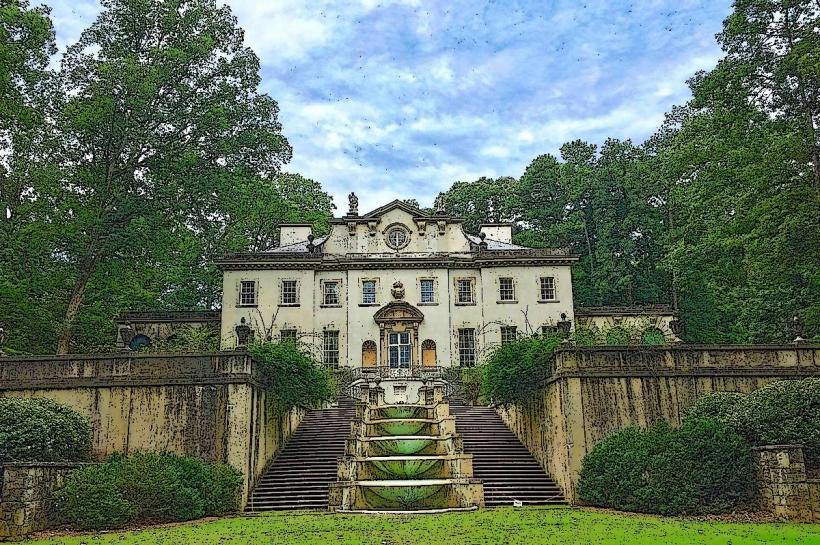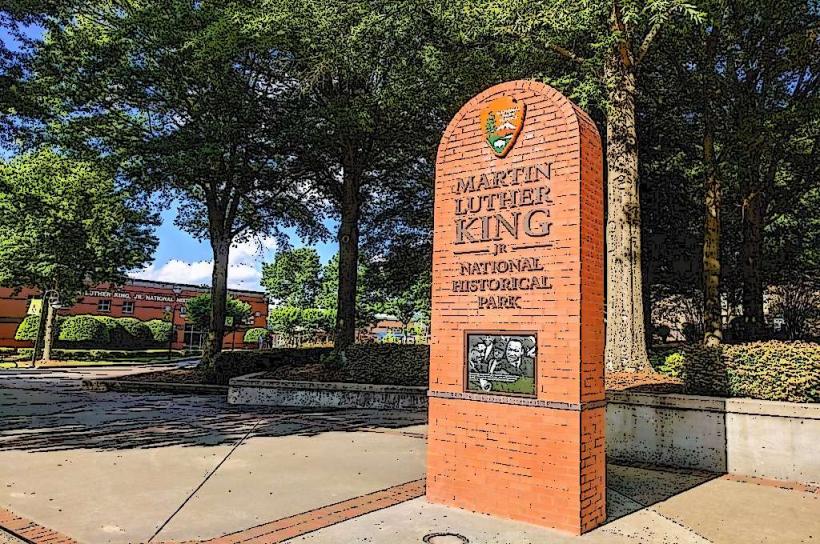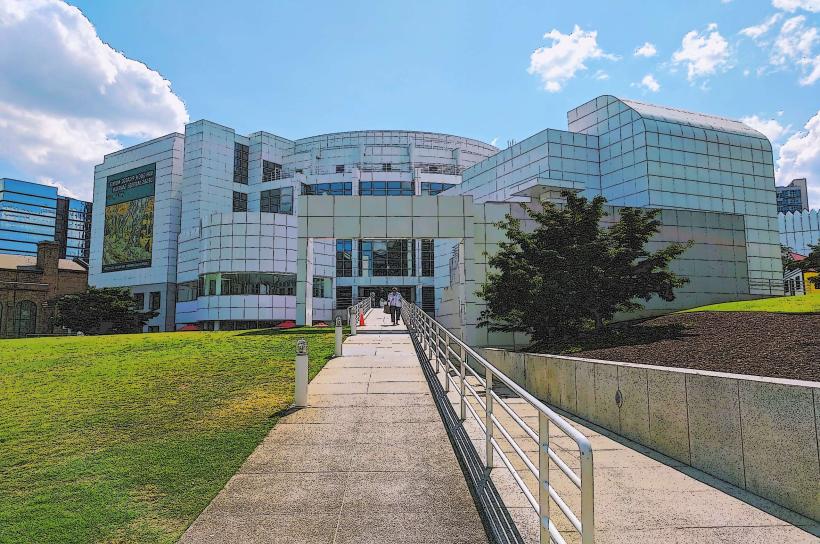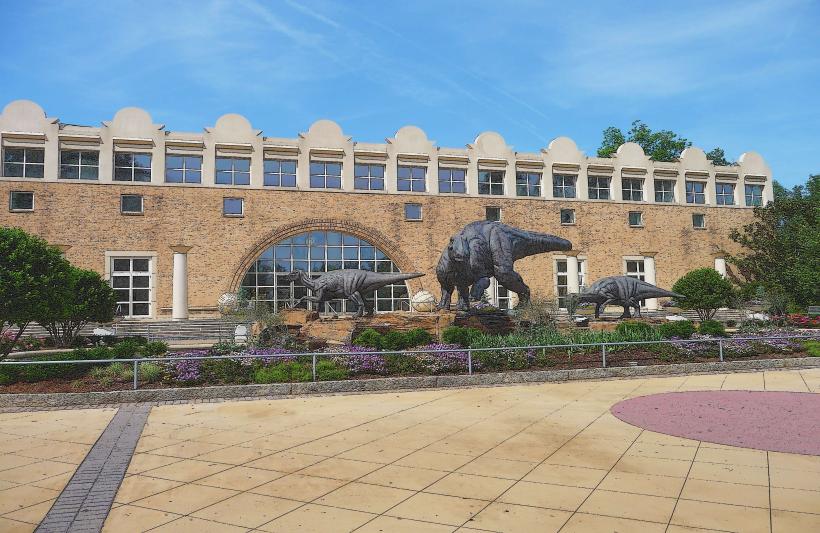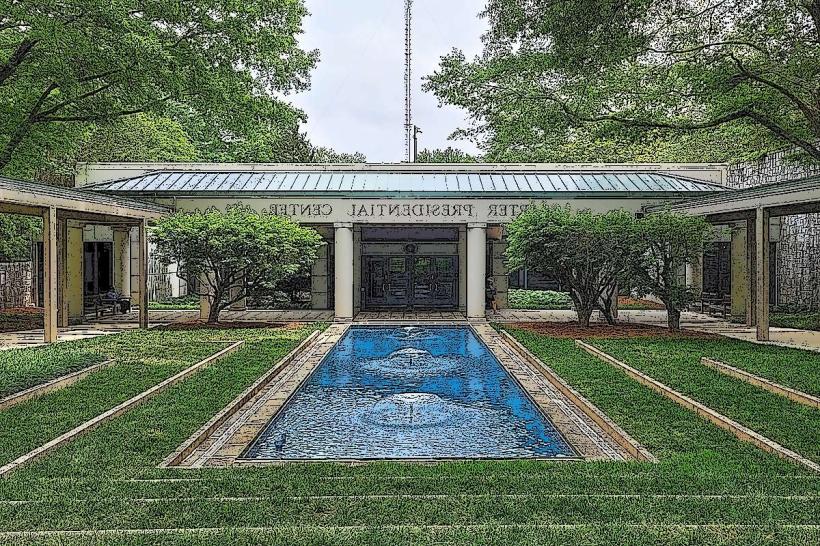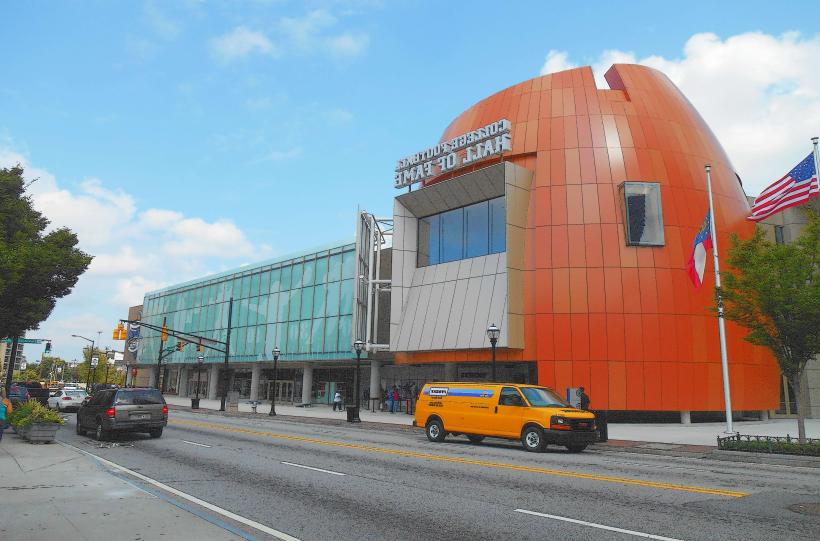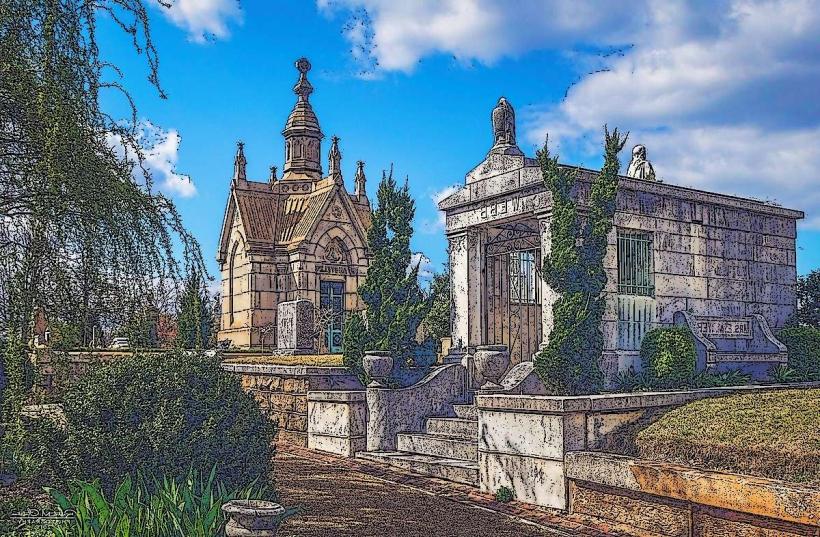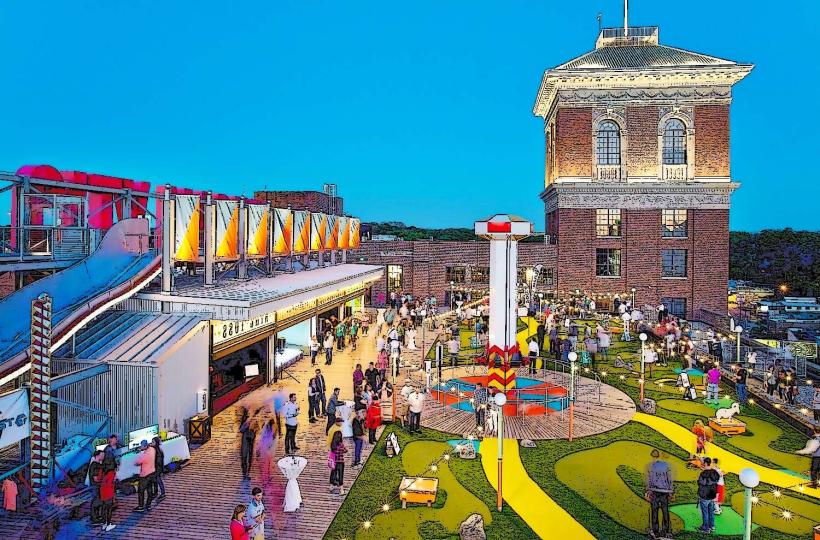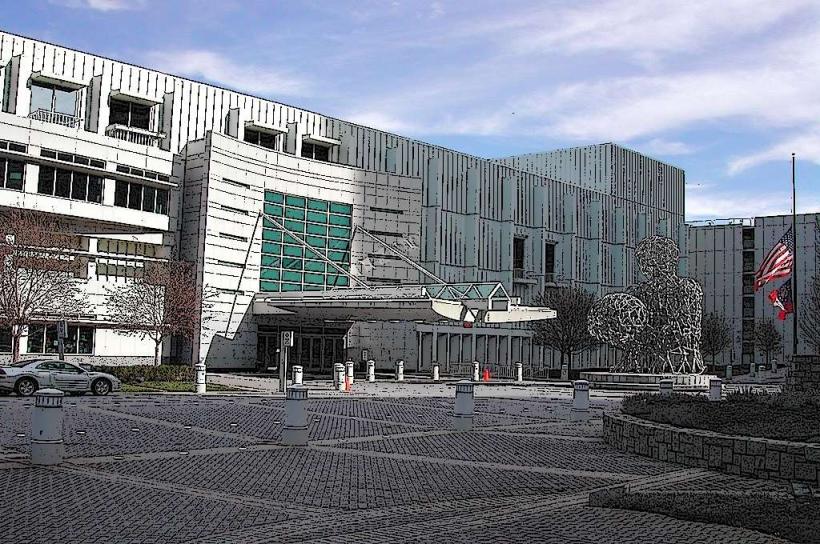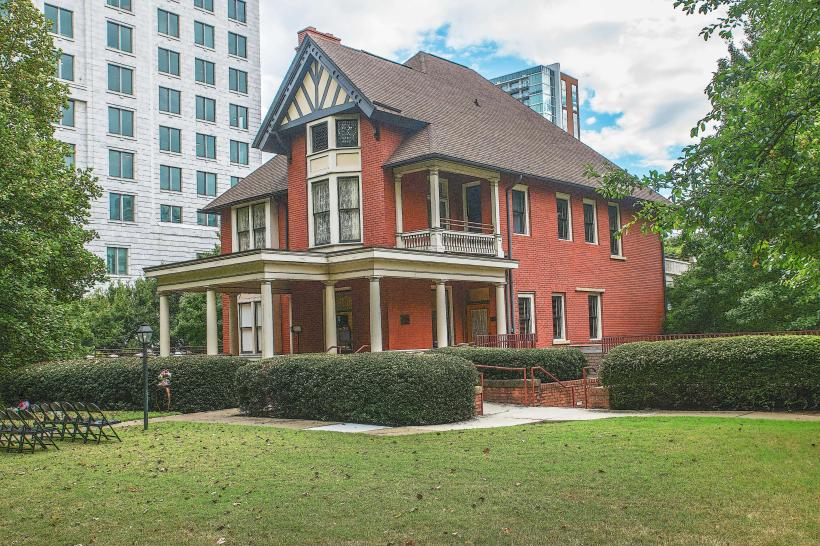Information
Landmark: Fox TheatreCity: Atlanta
Country: USA Georgia
Continent: North America
Fox Theatre, Atlanta, USA Georgia, North America
Overview
In Atlanta, the Fox Theatre stands as a historic gem with soaring arches and ornate ceilings, celebrated as one of the city’s most iconic landmarks, to boot the theatre, which first opened its doors in 1929, blends lavish architecture with a storied past and a busy lineup of shows, from glittering musicals to quiet, candlelit recitals, making it both a cultural landmark and a site steeped in history.In the 1920s, plans took shape for the Fox Theatre, envisioned as a grand headquarters for the Yaarab Temple, the local Shriners chapter, with marble floors gleaming under its ornate arches, alternatively the design took its cues from Moorish arches and Egyptian motifs, echoing the Shriners’ fascination with Middle Eastern style, in some ways The construction costs climbed beyond what the organization could handle, so they partnered with film mogul William Fox, who transformed the building into a gleaming luxury movie palace under the Fox Theatres Corporation name, while it opened its doors to the public on December 25, 1929, as the chill of the Great Depression was just beginning to settle in.Even in the middle of the economic turmoil, the theater drew crowds, its soaring arches and vibrant performances keeping people coming back, not only that the Fox Theatre’s architecture is a dazzling mix of fantasy styles, weaving together Islamic arches, Hindu motifs, Egyptian columns, and Moorish patterns.The architectural firm Marye, Alger and Vinour designed it, and today it still stands as a rare glimpse of early 20th‑century American exoticism, with arches that catch the afternoon light, therefore from the outside, it looks like a mosque or an Arabian palace, with slender minarets, rounded onion domes, and stonework carved so finely you can trace the grooves with your fingertip.Funny enough, The main facade along Peachtree Street features intricate geometric patterns and colorful tile work, echoing the bold shapes and earthy tones of North African and Middle Eastern designs, meanwhile inside, the main auditorium feels like an Arabian courtyard under a night sky, its deep indigo ceiling scattered with 96 crystal stars-several of them wink just like the real feature.Shadows of drifting clouds slide over the ceiling, deepening the illusion, meanwhile throughout the building, trompe-l'œil work turns plain plaster columns into what glance like timeworn wood, and even flat walls seem etched with fine carvings or brushed with gold.Rich red and gold fill the auditorium, archways traced with fine stencils and balconies carved in intricate detail, all crowned by a massive proscenium arch above the stage, furthermore one of the Fox Theatre’s showpieces is the “Mighty Mo,” a Möller organ with 3,622 pipes that can fill the hall with a sound as rich as warm brass.It was installed in 1929 and remains one of the world’s largest theater organs, still echoing through the same grand hall where it first played, furthermore it first filled the room with music for silent films, and it still works today-sometimes played before a show, its warm notes carrying the theater back to its earliest days of cinema.From the 1930s through the 1950s, the Fox thrived, drawing crowds for films and live shows beneath its glittering marquee, therefore it hosted Hollywood premieres, filled the hall with the swell of immense band brass, and welcomed crowds for local civic gatherings, perhaps By the 1960s, downtown was fading, and shiny contemporary suburban multiplexes were pulling crowds away, leaving theaters half-empty and struggling to stay afloat, as a result in 1974, crews planned to tear down the Fox to clear space for a concrete parking deck.Frankly, A powerful grassroots campaign called “Save the Fox” sprang up in Atlanta, fueled by neighbors determined to preserve and restore the beloved vintage theater with its flickering marquee lights, equally important thousands of locals gave their money and countless hours, and in 1975 the Fox Theatre earned a spot on the National Register of Historic Places.In the 1970s and ’80s, restoration teams worked to bring back its original grandeur, painstakingly rebuilding cracked stonework and quietly adding modern comforts while keeping its historic character intact, what’s more since then, it’s been through several rounds of restoration and tech upgrades, yet the warm glow of its vintage brass fixtures still preserves the building’s historic charm.Interestingly, Today, the Fox Theatre buzzes with life, staging everything from Broadway hits like *Hamilton*, *The Lion King*, and *Wicked* to concerts that range from a quiet string quartet to thundering rock, along with it screens classic films-sometimes silent ones with the Mighty Mo organ rumbling beneath the melody-and hosts comedy tours, community gatherings, and special ceremonies.Somehow, large touring productions share the calendar with hometown events, welcoming about half a million visitors each year, not only that amenities and Experience The theater holds 4,665 guests, with seats stretching from the close-up view of the orchestra to the high perch of the balcony.You’ll find VIP lounges with plush chairs, a grand ballroom, and spaces ready to rent for any event, in addition you can join regular guided tours that take you behind the scenes-into dressing rooms with the faint scent of powder, up to the organ loft, and inside the ornate Egyptian Ballroom.The Fox Theatre stands as a shining emblem of Atlanta’s dedication to preserving its history and the grit of its community, its glowing marquee lighting up Peachtree Street night after night, after that fox Theatre, Inc, a little Runs it, keeping the lights dazzling and the doors open, a nonprofit organization dedicated to maintaining the facility and its programs, at the same time a nonprofit devoted to keeping the facility running and its programs alive, from repairing leaky faucets to hosting weekly classes.Its success sparked efforts to save other historic theaters across the U, subsequently s, from dusty brick playhouses in petite towns to grand timeworn movie palaces, and it became a blueprint for grassroots cultural activism.In the end, Atlanta’s Fox Theatre is more than a stage-it’s a glittering architectural gem, a proud echo of 20th-century theatrical splendor, and a vibrant reminder of what a community can save when it refuses to let history fade.
Author: Tourist Landmarks
Date: 2025-10-03





